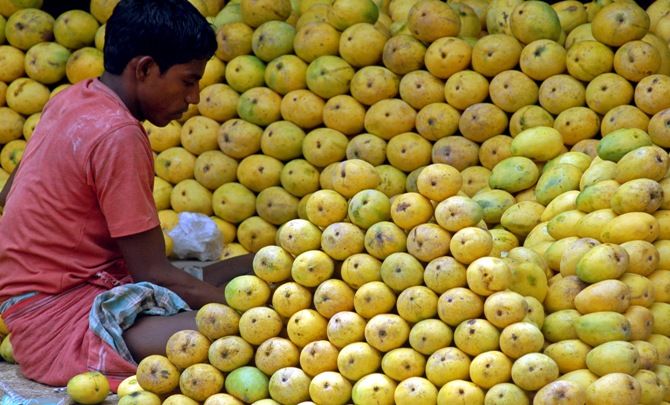 | « Back to article | Print this article |
 There is no worse situation for a central bank than slowing growth accompanied by accelerating inflation.
There is no worse situation for a central bank than slowing growth accompanied by accelerating inflation.
The September numbers for the Index of Industrial Production and the October numbers for the Consumer Price Index were published last week. On the production side, the index grew by a somewhat pallid 3.6 per cent year-on-year, sharply down from the 6.2 per cent recorded in the previous month.
In the manufacturing sector, which accounts for about 75 per cent of the index basket, the drop-off was even more striking -- from 6.6 per cent in August to 2.6 per cent in September.
Looking at specific industries, some significant ones like garments, cement, and basic metals saw year-on-year declines in production.
On the other hand, sectors like electrical machinery and motor vehicles did reasonably well, growing at around 22 per cent and nine per cent respectively.
The entire index was skewed by the massive surge in furniture and fixtures, which grew by about 70 per cent over September 2014.
Overall, capital goods did relatively well, with growth at over 10 per cent, but consumer goods showed a mixed pattern, with durables growing by over eight per cent but non-durables declining by almost five per cent.
The pattern suggests some positive response to lower interest rates, but also the negative impact of declining exports, such as in garments.
The bottom line is that the momentum that was seen over the past few months is not showing strong signs of consolidating.
The inflation numbers also suggest caution.
Year-on-year inflation, which had been quite subdued over the past few months, notched up to five per cent, largely on account of food inflation rising to 5.25 per cent.
Within the food basket, the big blow came from pulses -- a year-on-year increase of about 42 per cent.
The initial steps -- liberalising imports and cracking down on 'hoarding' -- have clearly not yet worked.
Even now, retail prices of tur dal are well upwards of Rs 150 per kg. Given that the harvest is pretty much in by now, a significant softening of prices is unlikely for a while, which means that consumer inflation will continue to face upward pressure.
The Reserve Bank of India's forecast of 5.8 per cent for March 2016 now begins to look more realistic.
There is no worse situation for a central bank than slowing growth accompanied by accelerating inflation.
Although both sets of numbers are not yet in dangerous territory, this fundamental dilemma has returned to confront monetary policy at a time when the economy could clearly do with more stimulus.
With the RBI having committed to inflation targeting, it must clearly put its priority in dealing with the adverse turn of events in the CPI.
The old debate on whether monetary policy actually helps contain food inflation will be revisited. The RBI argues that, even if there is no direct impact, inflationary expectations must be contained through credible action.
The likely stance in the next bi-monthly policy statement in early December is therefore that the status quo will be maintained. Food inflation, strikingly benign over the past few months, is back in the spotlight.
Image: A hawker arranges mangoes at a roadside shop in Chennai. Photograph: Babu/Reuters